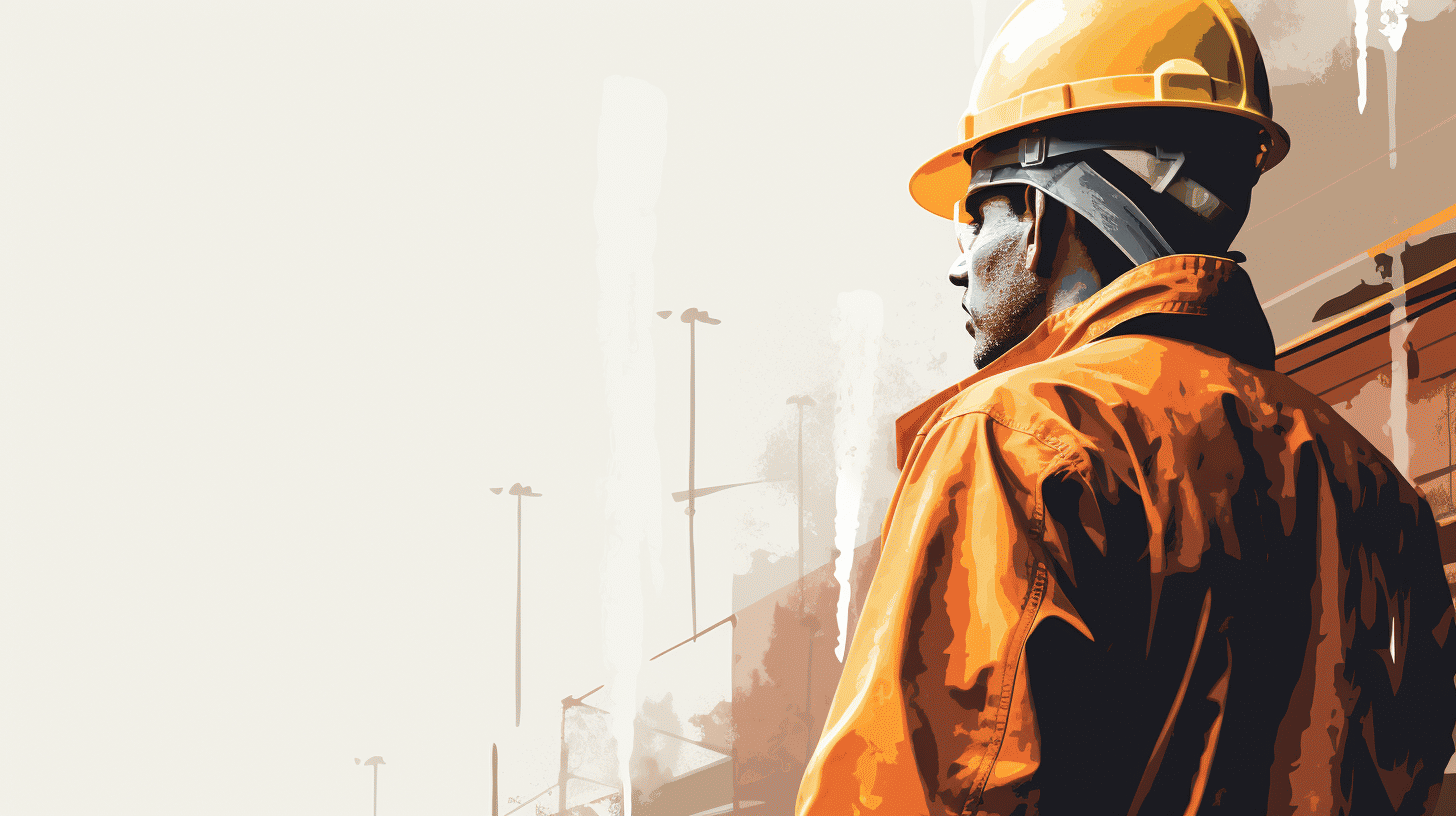Despite the remarkable advancements in construction technology, safety remains a critical concern especially during inclement weather conditions like rain. As we step into 2023, considerable emphasis is placed on outfitting construction workers with suitable rain gear, to safeguard them against the risks posed by damp environments. This article takes an in-depth look at why weather-specific safety measures are vital in construction work, the role of effective rain gear, and the emerging trends that are set to elevate construction safety standards in 2023. Equipping yourself with this knowledge can empower you to create safer working conditions, enhance productivity, and reduce onsite accidents amid challenging weather conditions.
Understanding the Importance of Construction Safety
Working in the construction industry is more than just about building structures. It's about nurturing an environment that creates safe productivity, even in potentially dangerous circumstances. As robust as this field is, it cannot be ignored that the industry, unfortunately, boasts some of the highest rates of workplace accidents and fatalities. Understanding the importance of construction safety is, therefore, a crucial aspect of successful project management.
Setting the Safety Standards
Without a proper safety standard in place, construction sites can quickly become hazardous spaces. The industry's nature involves working with heavy machinery, handling hazardous materials, and operating at great heights, which can pose significant risks to workers' health and safety. However, with the right safety measures in place, these potential risks can be greatly reduced.
Adherence to safety standards in the construction industry ensures:
- Worker Safety: These standards protect the health and well-being of the workforce, helping to prevent accidents and injuries on-site.
- Project Continuity: Enhanced safety standards minimize work stoppages due to accidents, maintaining project timelines.
- Legal Compliance: Strict implementation of safety standards ensures that construction companies adhere to local and international rules and regulations, avoiding legal disputes.
- Enhanced Reputation: Businesses that prioritize safety are seen as more reliable and trustworthy, boosting their credibility and enhancing their reputation in the industry.
Impact of Safety Measures on Construction Outcomes
Implementing stringent safety measures is not just a moral obligation; it significantly impacts the outcomes of construction projects. A safe workforce is a motivated and productive workforce. With lower rates of accidents and injuries, workers are able to focus on their tasks, improving work quality and efficiency.
In particular, a comparative study of construction projects that implemented industry-standard safety measures and those that did not revealed some remarkable differences. The ones with safety measures had significantly fewer accidents, minimizing project delays, reducing costs, and resulting in high morale among the workforce.
In the construction industry, where every second counts, implementing safety measures plays a pivotal role in driving productivity and ensuring quality outcomes. The value of safety in construction extends beyond the physical health of workers to the overall success of projects. Thus, realizing the importance of construction safety is much more than an option; it's an essential component for success in the construction industry.
If you're in this business, acknowledging and implementing safety measures should be on top of your to-do list. After all, a healthy, safe, and productive workforce is the backbone of a thriving construction industry.
Role of Weather in Construction Safety
When we take a moment to consider the variables that majorly influence construction safety, weather meteorology is often overlooked in favor of more immediate concerns like equipment safety, compliance to safety regulations, and worker training. However, weather, with its unpredictability and tangible impact on a worksite's condition, plays a critical role in ensuring construction safety. From rain-induced slippery conditions to searing summer heat impacting worker productivity, it's crucial to comprehend the significant role weather plays in construction safety.
Effect of Rain on Construction Site Safety
Rain can have a pervasive influence on the safety of a construction site. Excessive rain has the potential to cause various complications, both logistical and safety-related, which can have detrimental impacts on the construction process. Below are some ways in which rain can affect construction site safety:
- Site Instability: Prolonged, heavy rainfall can saturate the ground, leading to unstable constructions sites. Moreover, excavation or trench work may collapse due to softened surfaces, resulting in hazardous working conditions.
- Slippery Surfaces: Rain can make surfaces slippery, increasing the risk of accidental falls within the construction site.
- Decreased Visibility: Heavy rainfall can cause poor visibility on construction sites, making it challenging for workers to see potential hazards.
Importance of Weather Forecasts in Construction
Leveraging advanced meteorological forecasts has become increasingly pivotal in the construction industry. Accurate and detailed weather reports enable construction managers to anticipate potential weather-related issues that could pose safety risks.
By understanding how weather affects construction safety, project managers can plan and adjust the workflow accordingly, reducing potential risks. They can also take preventative measures to safe-guard against severe weather conditions, such as arranging for temporary shelter during rain or providing work-shifts earlier in the day to avoid peak afternoon temperatures.
Moreover, having accurate weather predictions can help ensure that appropriate safety equipment and clothing are available to workers, ultimately contributing to construction site safety. With timely weather alerts, construction companies can mitigate weather-related safety risks, ensuring the smooth and safe progression of their projects.
In this ever-changing climate, understanding and mitigating the influence of weather on construction site safety is more than just a good practice - it's a critical element of effective project management. Weather will remain an ever-present variable in construction operations, and responding to its changes proactively will pave the way for a safer and more productive construction industry.
Core Imperatives of Rain Gear in Construction Safety
Whether in the tropical monsoons or amidst spring showers, construction work doesn't halt. In fact, it often underlines the urgency and importance of using appropriate rain gear for ensuring safety at the job site. With a gamut of options available today, one might wonder- What are the specific criteria that one needs to consider while selecting rain gear for construction safety? Let's deep dive into the three core imperatives: Waterproofing, Visibility, and Durability.
Primacy of Waterproofing
As obvious as it might seem, the primary purpose of any rain gear is to shield you from rain, and in the construction context, to keep the worker dry and comfortable. But it's not just about dodging the discomfort of wet clothes. This aspect goes hand-in-hand with safety as well.
- Keeping dry prevents hypothermia: Even in warmer weathers, a drenched body can quickly lose body heat, leading to dangerous hypothermia.
- Protects against diseases: Staying wet for prolonged periods can lead to health hazards like fungal infections and colds.
Therefore, when selecting rain gear, always look for waterproof ratings that indicate how much water the gear can repel. Materials such as PVC (Polyvinyl Chloride) and PU (Polyurethane) are often employed in making high-quality waterproof gears due to their robust waterproof properties.
Importance of Visibility in Rain Gear
Working in the rain often means poor visibility due to the combination of dark skies and water mist. Hence, another crucial element in rain gear for construction is high-visibility colours and reflective strips.
- Colours: Bright colours like fluorescent orange or neon green help the worker to stand out against the backdrop, principally in the dim lighting often associated with rainy weather.
- Reflective strips: These bounce off any light making the wearer visible even in low light conditions.
These visibility features are vital in preventing accidents caused by visibility constraints in the rainy environment.
Durability and its Impact
The harsh environments and rugged activities synonymous with construction work demand rain gear that can withstand the wear and tear. If the gear rips apart at the slightest scrape against a rough surface or load, it defeats its purpose of protection. Thus, durability is a cardinal aspect to be considered.
- Material toughness: Gears made of durable materials like heavy-duty PVC not only repels water but also resist tears and abrasions.
- Reinforced stitching: This is another feature to look out for when assessing the gear's durability. It can ensure the gear's longevity even in rigorous working conditions.
Understanding these core imperatives of rain gear in construction safety can guide workers and employers in making informed choices, thereby ensuring safety and comfort even during adversarial weather conditions. The right gear is more than an investment; it's a protective shield.
Forecasting Rain Gear Trends in 2023
As we take a glance into the crystal ball called "the future," our attention is caught by an unexpected player - rain gear! Year after year, this essential segment of outdoor apparel has been quietly revolutionizing, shaping its destiny to offer you the ultimate protection from nature's elements. As we set our sights on 2023, we anticipate three pivotal trends propelling the world of rain gear - innovative material technology, sustainability, and smart features.
Innovation in Material Technology
The significant strides taken in material technology cannot be understated and rain gear isn't left out of this narrative. Today's consumers prioritize comfort alongside protection, and brands have keenly responded. In the not-so-distant future of 2023, the landscape of waterproof fabrics is forecasted to be dominated by materials that are not just sturdy, but also incredibly lightweight and breathable.
- Microfiber Tech: The popularity of microfiber fabrics is set to surge, thanks to its incredible water-repel property coupled with a plush feel to the skin.
- Heat-Adaptive Materials: Beyond just being waterproof, fabrics that can adapt to body heat and regulate temperature will soon be all the rage. No sweating in your rain gear!
- Eco-Friendly Synthetics: Synthetics that are both superior in performance and environmentally-conscious will command a large market share.
Sustainability as a Key Driver
Amidst the buzzing talks of climate change, brands and consumers alike are gravitating towards more sustainable processes and products. By 2023, the role of sustainability in shaping rain gear trends will be more prominent than ever.
- Recycled Fabrics: The popularity and use of recycled or upcycled materials in rain gear manufacturing is a growing trend that will soon reach new heights. Not just plastics, even discarded fishing nets and carbon fiber will be given a new lease of life.
- Sustainable Dyes and Finishing: The utilization of plant-based dyes, water-less coloring methods, and non-toxic waterproof finishes will become widespread.
- Ethical Manufacturing: Brands focused on ethical manufacturing practices, fair trade, and worker welfare will gain strong consumer love and loyalty.
Smart Features and Connectivity
We live in a smart, connected world - and rain gear, too, is keeping pace. The year 2023 will witness a wave of smart rain gear, complete with technologically advanced features designed to make your outdoor experiences nothing less than spectacular.
- Built-In Gadgets: Rain gear will no longer be just about protection; think jackets with built-in earphones or gloves with touchscreen capabilities!
- GPS Connectivity: Imagine if your gear could guide your trail! GPS-connected rain gear for adventurers and explorers is on the horizon.
- Wearable Tech Integration: Your fitness tracker, your jacket, and you - all synced perfectly for that seamless outdoor adventure.
So, as the realm of rain gear continues its march into the future, we eagerly look forward to what 2023 has in store. With these gripping trends on the horizon, next year promises a downpour of innovation, sustainability, and connectivity - making sure you stay dry, comfortable, and in style, come rain or shine!
Enhancing Safety Practices with Proper Rain Gear
Given the unpredictability of weather patterns, the use of appropriate rain gear is pivotal in ensuring the safety of your employees, particularly those working in outdoor environments. Rain gear protects your work crew from health-related hazards associated with working in wet conditions, such as hypothermia or slipping accidents. For organizations to attain the most utility from rain gear, it is essential to focus on three key areas: teaching workers how to use rain gear, maintaining and upgrading this equipment, and monitoring and improving rain gear effectiveness.
Training Workers for Rain Gear Usage
Knowledge is often said to be power, and this rings true in ensuring effective use of rain gear among workers. Training programs serve multiple purposes:
- They enlighten workers on the importance of wearing rain gear
- They teach workers how to wear and remove rain gear properly
Integrating practical demonstrations during the training sessions could amplify the learning process. This hands-on approach enables workers to gain a first-hand experience in the proper handling of rain gear, thus preparing them for actual rainy situations.
Maintaining and Upgrading Rain Gear
Just like any other equipment, rain gear should be maintained to achieve optimum performance and durability. Regular checks on the gear and necessary repairs are indispensable. If gear is damaged beyond repair, consider replacing it, as a compromise in the gear's integrity could be detrimental.
Additionally, it's important to stay current with technological advancements. Often, manufacturers upgrade rain gear with improvements such as lighter, more durable materials, or added features such as reflectivity for better visibility.
Monitoring and Improving Rain Gear Effectiveness
Even with training and maintenance, it's important to continue monitoring the effectiveness of your rain gear. You can gauge effectiveness by:
- Observing how well the gear repels water during rainfall
- Noting any employee complaints or discomforts linked to the gear
- Checking if there's any significant decrease in work-related incidents associated with foul weather after introducing the rain gear
Feedback from employees can help target areas for improvement.
Undoubtedly, rain gear plays a cardinal role in enhancing safety practices in workplaces characterized by unpredictable weather conditions. By instituting proper usage, maintenance, and effectiveness monitoring, organizations can uphold the safety and health standards of their workforce. Forward-thinking safety procedures, coupled with the readiness to adapt, forms the backbone of a conducive and productive working environment.
Conclusion
In the ever-evolving world of construction, safety continues to be the pinnacle of progress. With weather being an unpredictable variable, it is paramount to equip the workforce with quality rain gear to facilitate optimal construction site safety. Embracing innovative technologies, focusing on sustainability, constantly evolving with worker training, and gear maintenance are vital steps in mitigating work-related risks and enhancing overall productivity.
Companies like Hurricane Raingear are leading the way in providing superior rain gear that effectively achieves waterproofing, visibility enhancement, and unrivaled durability – the triple pillars of construction safety in inclement weather. With Canadian craftsmanship and 100% North-American-Made materials, their rain gear epitomizes comfort, safety, and style, raising the bar for construction site safety in 2023 and beyond. Explore their unique line-up of technologically advanced, sustainable, and tough rain gears here.
Remember, your safety starts with you and the right gear can make all the difference when it comes to turning the tide against weather-induced construction hazards.
Frequently Asked Questions
-
Why is proper rain gear important for construction safety?
Proper rain gear is important for construction safety as it helps protect workers from adverse weather conditions such as rain, snow, and strong winds. It helps prevent illnesses, reduces the risk of accidents due to slippery surfaces, and improves overall comfort and morale on the job site.
-
What types of rain gear are suitable for construction workers?
Suitable rain gear for construction workers includes waterproof jackets, pants, and overalls. Additionally, safety features like high-visibility colors, reflective strips, and non-slip soles are recommended to enhance visibility and minimize accidents.
-
Can regular raincoats be used as rain gear for construction workers?
Regular raincoats may not provide the necessary protection for construction workers as they are typically not designed for heavy-duty use. It is recommended to invest in rain gear specifically designed for construction work, which offers durability, water resistance, and additional safety features.
-
How do I choose the right rain gear for construction work?
When choosing rain gear for construction work, consider factors such as waterproof or water-resistant materials, breathable fabrics, proper sizing, ease of movement, and the presence of safety features. It is also important to check if the gear meets applicable safety standards and regulations.
-
Are there any maintenance tips for proper care of rain gear?
To ensure the longevity and effectiveness of rain gear, it is important to follow the manufacturer's care instructions. Generally, this may include regular cleaning, proper drying, avoiding harsh chemicals and heat exposure, and storing the gear in a dry and ventilated area.























Leave a comment
This site is protected by hCaptcha and the hCaptcha Privacy Policy and Terms of Service apply.